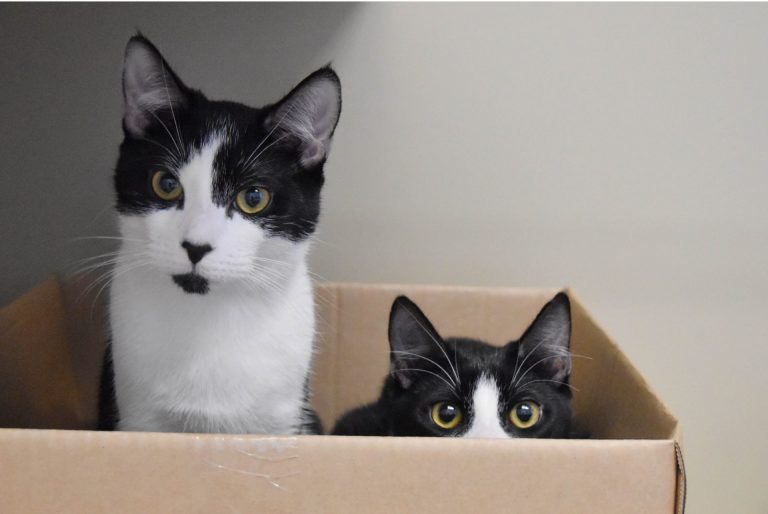Moving house is always a busy and stressful time for everyone, including your feline friend. Here are some tips for making the move as smooth as can be for you and your cat.
Firstly, to avoid any heartache later on make sure your new property is pet friendly. Sadly, too many pets are surrendered to council pounds and animal shelters when people move to accommodation where animals are not allowed.
Cats like routine. Any changes in their daily routine can be stressful so planning ahead is especially important. If possible, pack up your household belongings slowly, over a period of time and leave your cat’s items till last to minimise stress. Getting a sturdy cat carrier ready for the move is essential; try leaving it out with the door open in the weeks before the move to encourage your cat to get used to their carrier.
With all the chaos of moving day and the comings and goings of removalists, consider taking your cat to a friend’s house or boarding them for the day so you can have peace of mind knowing they will be safe while you concentrate on the move. If your cat is very nervous, talk to your vet about calming medications, and in any case consider calming supplements such as ‘Zylkene’ and tranquil treats.
Prepare your new home in advance. Have a room set up with a litter tray, food and water bowls, and a bed for your cat. Have a few things they are used to in the room to make them feel more at home. You might want to try using a ‘Feliway’ (a synthetic feline pheromone that can help calm cats) diffuser in the room. Try placing an igloo style bed or a box in the room as your cat may want to hide for a few days after the move. Don’t be too concerned if this happens; your cat is trying to adjust to their new surroundings. Now is an excellent opportunity to make your cat an indoor-only cat – ensure plenty of climbing perches and window seats
It is best to confine your cat to one room of the house for the first few days after your move. This will help your cat settle in. There will also be less risk of them escaping while you are busy unpacking. Ensure all windows and any outside doors are firmly closed, before letting your cat start exploring the rest of the house. Go slowly, introducing them to one room at a time and letting them thoroughly sniff around before moving on to the next space. It is perfectly normal behaviour for your cat to display excess scratching when you first move. By scratching, they are leaving their scent throughout the home and reestablishing their territory.
Once you’ve moved into your new home remember to update details on the pet registry (for NSW residents visit: https://www.petregistry.nsw.gov.au/#/). This is so important as if your cat does escape, it will ensure they can be returned to you.
Don’t forget to change your address or you may not get your cat back if they do wander off. This can easily be done online or by calling your local council.
Most importantly make sure you don’t neglect your cat in the move. They need the security of your love now more than ever.
For more information on Moving house with your cat see Cat Protection Society’s factsheet or visit their website www.catprotection.org.au For general advice on cat care and everything feline, call the Cat Protection Society of NSW on 02 9557 4818.




